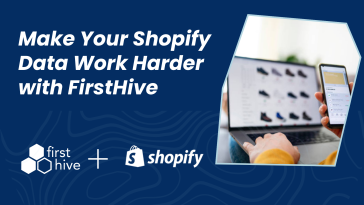It is found that an increase in member/customer retention by just 5 percent leads to an increase in profits by 25 to 95 percent. ‘Customer Loyalty’ is what differentiates the member-savvy credit unions from those that ignore the member needs.
This is the last episode of the Credit Union series that focuses on answering ‘how to retain existing members?’. While tackling the existing member base may seem easier than acquiring new ones, it is not. Member attrition cannot be defined by the number of members who reduce, but by the number of members those who stop using the services of a credit union.
Even before you start implementing your well-researched member retention program, you need to benchmark your efforts against some tangible metrics.
How do you measure the success of Member Retention?
Before implementing a member retention program, loyalty campaign or influencer campaign, design your marketing campaigns to achieve the following outcomes.
- Increase the member lifetime value
- Increase member engagement
- Reduce member churn
- Increase profitability
- Increase loyalty index
- Increase Net Promoter Score
- Increase member participation
But truly, here is your template that can help you get started with a retention program.
How can credit unions improve their penetration within their current member base?
Positive member retention efforts result in deposit growth, loan repayment, referrals, and purchase of another service from the same credit union.
Member retention begins with providing members with good financial advice, personalizing the customer experience, building an in-person relationship, and application of technology to improve voice banking, mobile banking, etc.

Influencer Marketing
Implementation of personalization or any other marketing begins with ‘knowing the customer’. Using the existing data and finding intelligent ways to extract supportive third-party data becomes the foundation of any further marketing activity.
A lot of saving and spending habits are driven by a person’s lifestyle and cultural motivators. And, this affects the patterns of deposit and loan repayment. Many influencers such as celebrities, therapists, employers, friends, and family form the member’s ecosystem. Your brand’s resonance among these influencers enhances your relationship with every single member. Most of such data is anonymous. However, holistic influencer marketing campaigns cater to gather influencer data too.
Another trend that brings a different set of influencers to handle is deposit displacement. Here funds that are kept in a bank or credit union checking account are diverted to health savings accounts, P2P apps like Venmo or Square Cash, and merchant apps from Starbucks, Walmart and others that let people load funds. Tech integrations that encourage this lifestyle change influence the member’s retention rate.
Also, in CDPs advanced analytical tools make it easier to monitor these influences. Beyond tracking, brands can use immediate digital feedback to better reach target consumers across multiple channels.
Personalization
Insights from McKinsey confirm that “data-activated marketing — based on a person’s real-time needs, interests, and behaviors — represents an important part of the new horizon of growth.” McKinsey says this can boost total sales by 15% to 20%, and digital sales even more, while significantly improving the ROI on marketing spend across marketing channels.
A Customer Data Platform gathers data across all sources of information and interaction that allows financial marketers to integrate different marketing technologies and use member data to design personalized campaigns.

33 percent of consumers who abandoned a business relationship did so because of the lack of personalization. This indicates that a member’s trust in the bank or credit union is determined by their ability to provide a personalized and relevant experience. This becomes all the more important in the digital age because millennials who promote digitization also have subliminal loyalties.
Referral Systems
Designing a referral-reward scheme is not just about the incentive, it more about the trust built between members and the credit union. While this can bring more prospects to your doorstep, it can also backfire if credit unions keep up to the promise.
Apart from credit points and surprise gifts, the member-centric credit unions combine referral schemes with service issue resolution. Though members remain satisfied with the services, they may not be willing to recommend your credit union to someone else. To avoid this gap, the context is set using member-level data to design exclusive referral-reward systems.
Referral systems are best when kept simple. Most traditional systems recommend the use of a single channel for referral programs that helps in reducing complexity. However, CDPs enable marketers to apply personalization and create contexts that are understood and appreciated by each checking customer.
Cross-selling and Upselling
Credit Unions need to take primary decisions about whether to include ‘go with’ services within the product category (debit card, online banking, mobile banking, bill pay, direct deposit, etc) and whether a cross-sell ratio includes only retail banking products and customers/households or small business, investment services and commercial customers/products as well.
Internal sales help in increasing revenues, keeping the cost per currency earned low. Financial marketers need to track the member journey and stay in touch with their needs. This helps in landing on a high-conversion sale instead of a non-converting, generic interaction. Loyalty programs combined with a reward mechanism help in increasing the member lifetime value.
What can a good ‘member retention’ program do to your Credit Union?It lets you maintain a pool of younger members, allowing you to achieve the average member age!! Research quotes that with a high member retention rate, the vast majority of your members stay with you year to year. Their age increases by one every year. |
Take Action
The primary agenda to blend the marketing strategy of Credit Unions with technology is driven by the goal to increase member base and loyalty among the existing members.
Delivering an exceptional user experience across channels requires deep insights of your members, and only by having the right combination of marketing and tech can you create highly refined target segments based on a multitude of attributes that are mapped to personas. This is the secret sauce that powers effective marketing campaigns that accelerate member acquisition, drive customer loyalty, and effectively cross-sell and up-sell.








